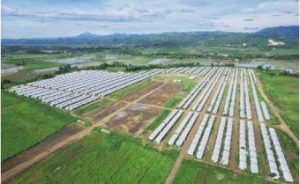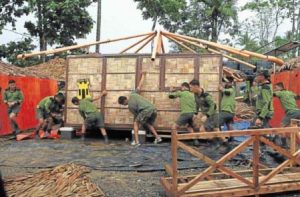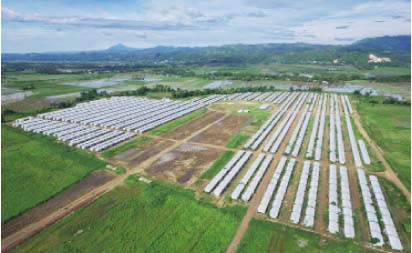
The Great Love City in Ormoc City…
The Great Love City, a 50-hectare temporary housing village built by the Tzu Chi Foundation for the victims of Typhoon Yolanda in Ormoc, Leyte, is home to around 2,000 families.
One of the families is that of Ledel Argawanon Lubon, 20, the most recent beneficiary of Tzu Chi’s gesture of great love.
Lubon had to quit school because of thyroid problems. Knowing her predicament, Tzu Chi offered her free surgery rendered by surgeon Dr. Silverio Arcamo and anaesthesiologist Dr. Dennis Capuyan at Ormoc District Hostpital on Oct. 2.
Lubon is now home with a brighter future after that simple intervention. Her mother, a TB patient, and her father who had a stroke, were also given financial aid for medicine and proper medical care.
Recently, a weekly flea market for the residents of the Tzu Chi Great Love City in Ormoc was launched to enable the villagers to sell their produce without having to leave the village and promote organic products at the same time.
The project, dubbed as “Market Market at the Great Love City,” or “Tabu-Tabu sa Great Love City” in the local dialect, opens on Sundays to buyers from within and outside the Great Love City.
“We put up this Market Market to make it more convenient for the people living here to buy their needs without having to go to the town. We are also giving the residents a chance to wake up their entrepreneurial spirit and creativity and for the residents to make good use of their time,” says Tzu Chi Philippines Deputy CEO Alfredo Li.
Market Market sa Great Love City strictly follows Tzu Chi’s advocacy of respect for all living beings, vegetarianism and simple living.
The houses in the Great Love City are single-detached units and has enough space for a backyard where every family can grow different vegetables, fruits, or flowers.
Apart from vegetables, vendors also sell different spices, mats, combs, among others. Services such as manicure and pedicure, massage or reflexology, and cellular phone repair are also offered.
Currently, 22 vendors are selling their products at the Market Market. Apart from the villagers, Tzu Chi volunteers also have a space where they sell second-hand donated clothes from Manila. The volunteers sell the items at an affordable price.
This is their way of promoting the practice of reusing items instead of throwing them away and add into the country’s garbage problem. Proceeds from the sales go towards funding Tzu Chi’s charity, medical and scholarship programs.

… Nipa huts as temporary homes in Marawi
Bahay Pag-asa, or House of Hope, is now a community of displaced residents from the war-torn city of Marawi, built at the initiative of Chinese Filipino Business Club Inc.
An initial 50 huts which took just two weeks to build were neatly arranged on a 1.2-hectare land in a village in this city. It could become a template for temporary housing for residents displaced by the war on terror.
CFBCI officers were in Marawi for the turn-over on Oct. 1. They are the first Tsinoy organization to visit war torn Marawi.
Samuel Uy, CFBCI vice president, said his group had been donating school buildings but it was the first time it ventured into housing for war evacuees and for fellow Muslims. Some families of soldiers and military men who fought in the Marawi war are also beneficiaries.
The huts, made of bamboo, nipa and sawali, were built on land donated by the chair of Bito Buadi Itowa village. They replace the airless tents that initially housed the refugees.
CFBCI funded the construction of the huts designed by Tarlac Heritage Foundation, a nongovernment organization involved mainly in preservation of heritage structures in the province of Tarlac, but which is also involved in charity work.
Each hut has 64 square meters floor area and powered by solar panels installed by the CFBCI at the site.
A tank with a capacity of 5,000 liters provides potable water.
Communal bathrooms – separate for males and females – were also built.
During the site visit, President Duterte witnessed three teams of soldiers compete who was the fastest to assemble the huts.
Col. Romeo Brawner, deputy commander of Joint Task Force Ranao, said the President also talked with some of the projected beneficiaries of the housing units.
At least half of the land would be devoted to vegetable and ornamental gardens that were cultivated by evacuees earlier on, before the huts were ready for occupancy.
Col. Manny Garcia of the Joint Task Force Marawi said the gardens, collectively named Hardin ng Lunas, was also conceptualized by Tarlac Heritage Foundation and the evacuees had their first tomato harvest on Oct. 2.
